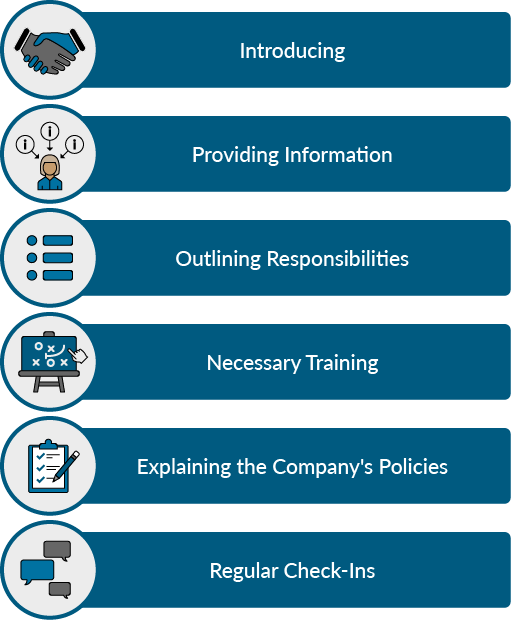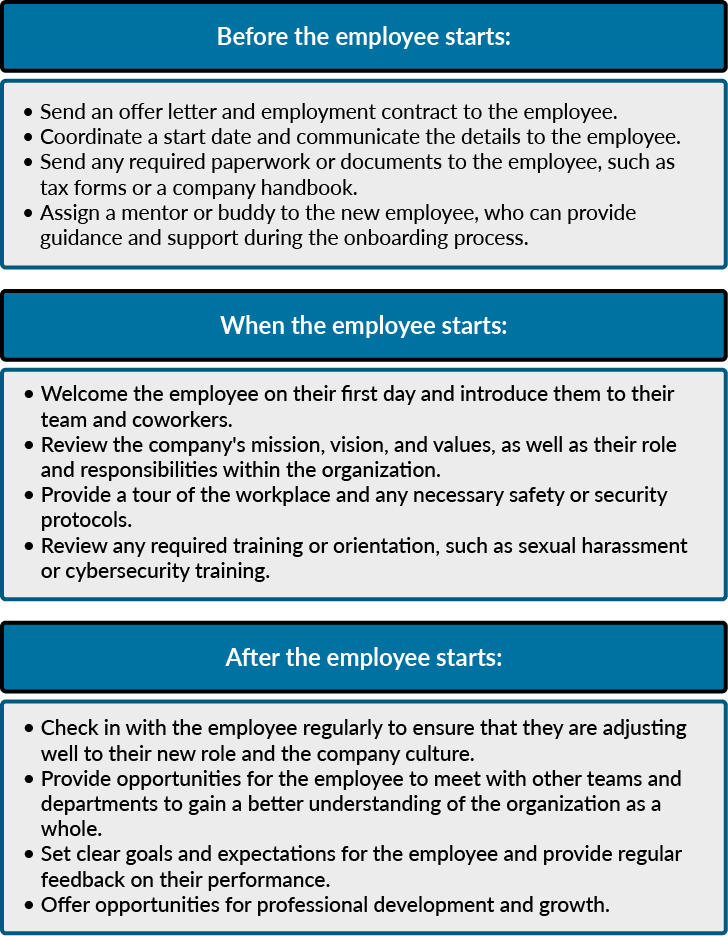Onboarding
After hiring a person, a company should typically provide an orientation or onboarding program to help the new employee acclimate to their role and the company culture. This may include:

- Introducing the employee to their team members and other key contacts within the company.
- Providing information on the company’s mission, values, and culture.
- Outlining the employee’s job responsibilities and performance expectations.
- Providing necessary training or resources to help the employee perform their duties.
- Explaining the company’s policies and procedures, such as benefits enrollment, time off requests, and performance evaluations.
- Setting up regular check-ins or feedback sessions to monitor the employee’s progress and address any questions or concerns they may have.
By providing a thorough orientation or onboarding program, companies can help new employees feel welcome and supported in their new roles and set them up for success within the organization.
Several steps should be followed for effective onboarding. Here is a general outline of the onboarding process, including steps to take before an employee starts, when they start, and after they start:

Before the employee starts:
- Send an offer letter and employment contract to the employee.
- Coordinate a start date and communicate the details to the employee.
- Send the employee any required paperwork or documents, such as tax forms or a company handbook.
- Assign a mentor or buddy to the new employee who can provide guidance and support during the onboarding process.
When the employee starts:
- Welcome the employee on their first day and introduce them to their team and coworkers.
- Review the company’s mission, vision, values, role, and responsibilities.
- Provide a tour of the workplace and any necessary safety or security protocols.
- Review any required training or orientation, such as sexual harassment or cybersecurity training.
After the employee starts:
- Check in with the employee regularly to ensure they are adjusting well to their new role and the company culture.
- Provide opportunities for the employee to meet with other teams and departments to understand the organization as a whole better.
- Set clear goals and expectations for the employee and provide regular feedback on their performance.
- Offer opportunities for professional development and growth.
A good onboarding program can have a positive impact on staff retention. When new employees have a positive onboarding experience, they are more likely to feel engaged and connected to the organization, understand their roles and responsibilities, and have the resources and support they need to be successful. This can lead to higher job satisfaction and a greater likelihood of staying with the organization. In contrast, new employees may feel disconnected and unsupported if the onboarding experience is poor or nonexistent, leading to a higher likelihood of turnover.
Insert Video 5 Here